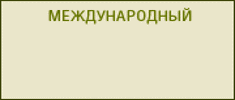List articles
|
This article discusses the methodological framework of the cost approach for the assessment of competitiveness of Russian banks. As the active operations of banks generate basic income, evaluation of costs of leveraging resources is an important element of the assessment of the inte- gral competitiveness of the bank. The author presents and validates es the algorithm of calculation procedures. On the basis of current data on the 50 largest banks the author makes approbation assessment of the funding costs, estimating on the basis of their competitiveness. Additionally, a comparison is the cost of resource generation by large and small banks. In this paper we dis- prove a number of typical misconceptions about the availability of an inverse relationship between the size of the bank’s cost of funding and active operations. Accordingly, the absolute ranking of banks in terms of competitiveness on the basis of this factor seems economically unjustified.
Continue...
|
|
|
In the article the authors consider the problems of application of the cost approach in taxation of Russia: peculiarities of transfer pricing and their account in determining the tax bases of taxation; problems of accounting in the taxation of such categories as the fair value of the taxation. The authors examine the impact of the application of the cost approach in taxation on the growth of competitiveness of the national economy.
Continue...
|
|
|
The article examines some aspects of the competitiveness of the tax system in general and territorial tax authorities in particular, in interaction with taxpayers. The paper substantiates and discloses competitive rivalry in tax control relations between tax authorities and business structures regarding taxation, which requires the transformation of the structure of tax inspection and the its informational system. The article also formulated the problem of professional competence of tax inspectors.
Continue...
|
|
|
№ 1(43)
27 february 2014 year
Rubric: Competitive Russia Authors: Kruglova E., Shelaganova I., Svetunkov M. G. |
One of the main tasks of state regulation is to find and keep a balance between economic and social efficiency of management decisions, to balance the competition mechanism with social mechanisms of society’s existence. An effective mechanism of providing a positive impact on the development of competition, entrepreneurial and investment activities aimed at achieving the balance of economic efficiency and social-cultural functioning of society, is regulatory impact assessment. This article describes how to conduct regulatory impact assessment of draft regulatory legal act of the Ulyanovsk region, affecting regulation of retail sales of alcohol products.
Procedure of regulatory impact assessment was based on the following stages:
1) Defining the problem;
2) Regulatory goals;
3) Analysis of options «status quo»;
4) Review of other solutions to the problem, given the results of public discussion a draft legal act;
5) Evaluation of the impact on competition;
6) Selection of options to solve the problem.
According to the results of regulatory impact assessment of the project act was concluded that the absence of sufficient justification addressing the proposed control method, the presence of the provisions in the draft act, introducing redundant duties and prohibitions and restrictions for entrepreneurs, as well as provisions that contribute to the emergence of frivolous spending of busi- nesses, the restriction of competition and the risks of negative social effects. Regulatory impact assessment not only allows to determine the focus and efficiency of decision making, but also a mechanism for the coordination of positions and interests of stakeholders, thereby improving the quality of the institutional environment by achieving a balance between economic and social efficiency.
Continue...
|
|
Article is devoted to the dynamics of development of small and medium-sized business in Rus- sia. The article presents the directions of state support of small and medium-sized businesses: financial, property, information and consulting support, and assistance in the field of training and development of employees. Statistics on the proportion and structure of small and medium enterprises in Russia is provided.
Continue...
|
|
|
№ 1(43)
27 february 2014 year
Rubric: International competition Authors: Barnashov O., Khalaf S., Mirou J. |
The article analyzes the factors of competitive relations between the U.S. and Russia in the Middle East. Various spheres of geopolitical competition are disclosed and describes the competitive situations between the U.S. and Russia in the competition for economic and political influence in key countries in the Middle East. Continue... |



